If your Croton is losing leaves, it could be due to a number of reasons. Here are 8 possible reasons why your Croton is losing leaves, as well as solutions for each problem.
Common Causes of Leaf Drop in Croton
Lastly, leaf drop can also be caused by pests or diseases. If the plant is not getting enough water, the leaves will start to turn yellow and eventually drop off. Another common cause of leaf drop is too much direct sunlight. One of the most common reasons for leaf drop in Croton is improper watering. If the plant is infested with pests or diseases, the leaves will start to turn yellow or brown and eventually drop off. If the plant is getting too much sun, the leaves will start to turn brown and drop off.
[1] Low Light Levels
Croton plants are known for their vibrant leaves, which can range in color from deep green to yellow, orange, and red. However, these plants can also lose their leaves due to a number of reasons, including low light levels.
If your croton plant is losing leaves, it could be due to a lack of light. If you think this might be the problem, try moving your plant to a brighter spot. These plants need bright, indirect light to thrive, so if they’re not getting enough light, they may start to lose their leaves.
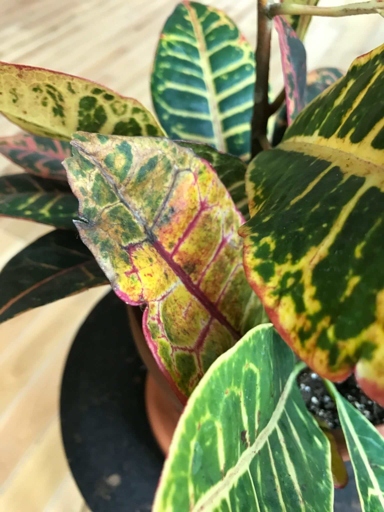
If your plant’s leaves are looking pale or yellow, it’s a sign that it’s not getting enough light. Again, try moving your plant to a brighter spot. Low light levels can also cause croton plants to produce fewer leaves, or to produce leaves that are smaller than normal.
If your plant is suffering from a lack of light, increasing the amount of light it gets should help it to start producing new leaves. If you’re not sure whether low light levels are the problem, check for other signs of stress, such as wilting leaves or stems.
How to Deal with Low Light Levels
Crotons need bright, indirect light to thrive, and if they don’t get enough light, they will start to lose their leaves. Here are a few things you can do to help your Croton get the light it needs: If your Croton is losing leaves, it could be due to low light levels.
If your Croton is in a low-light spot, try moving it to a brighter spot. It may take a few days for the Croton to adjust, but it should start to perk up once it gets more light. Move it to a brighter spot.
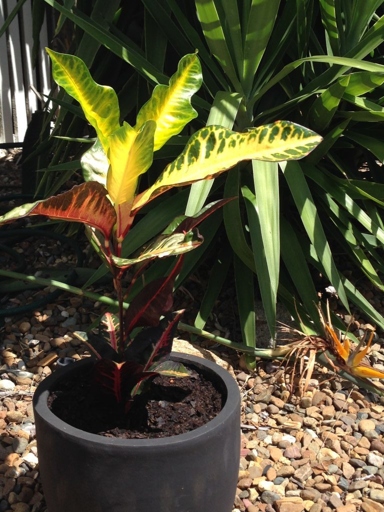
Place it near a window where it will get some indirect sunlight, or use a grow light. Give it some artificial light. If you can’t move your Croton to a brighter spot, you can try giving it some artificial light.
If your Croton is getting too leggy, you can prune it to encourage new growth. Prune it. Cut back the longest branches to encourage the plant to put more energy into new growth.
[2] Overwatering
Overwatering your croton can lead to a number of problems, including leaf loss. When you overwater, the roots of your plant can’t get the oxygen they need and the leaves can start to drop. Other problems caused by overwatering include root rot, leaf yellowing, and stunted growth.
If it’s soggy or wet, you’re probably giving your plant too much water. If you think you’re overwatering your croton, the first thing you should do is check the soil. You can also try watering your croton less often, or using a smaller pot with better drainage. Let the soil dry out completely before watering again.
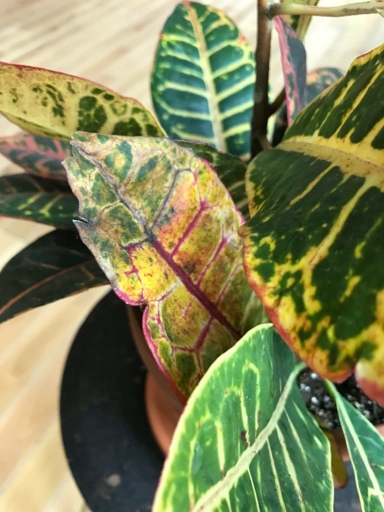
This will help the plant to focus its energy on new growth. If your croton is already showing signs of overwatering, like yellowing leaves, you can try to save it by carefully removing the affected leaves. Be sure to water your croton only when the soil is dry, and don’t forget to provide it with plenty of bright, indirect light.
How to Fix an Overwatered Croton
If the roots are rotting, you will need to trim them away and replant the Croton in fresh soil. Overwatering can cause the leaves to turn yellow and drop off. It can also lead to root rot, which can kill the plant. Allow the soil to dry out completely between watering. You may also need to repot the plant in a well-draining potting mix. If your Croton is losing leaves, it is likely due to overwatering. To fix an overwatered Croton, you will need to water it less often.
[3] Underwatering
Underwatering is one of the most common reasons why your croton is losing leaves. If the soil is dry, water your croton deeply and regularly to prevent the leaves from dropping. If you notice your croton is losing leaves, check the soil to see if it is dry. The leaves will start to turn yellow and then brown and eventually drop off.
How to Fix Underwatering in Crotons
The leaves of the plant will start to droop and turn yellow or brown. Underwatering is a common problem with Crotons. The plant may also start to wilt. If you think your Croton is underwatering, there are a few things you can do to fix the problem.
Be sure to water at the base of the plant, not on the leaves. Crotons need moist, well-drained soil to thrive. If it is, water the plant deeply. First, check the soil to see if it is dry.
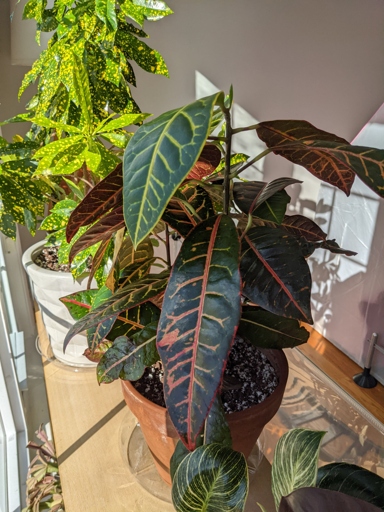
To improve drainage, add some organic matter to the soil, such as compost or peat moss. If the drainage is poor, the roots of the plant will start to rot. If the soil is not dry, check the drainage. Crotons need good drainage to prevent root rot.
Crotons need bright, indirect light to thrive. Move the plant to a brighter location. Finally, check the light. If the plant is getting too much direct sunlight, the leaves will start to scorch. If the plant is not getting enough light, it will start to lose leaves. Move the plant to a location with less direct sunlight.
By following these tips, you can fix the problem of underwatering in Crotons.
[4] Heat and Inadequate Humidity
If your croton is losing leaves, it is likely due to insufficient heat or humidity. Croton plants are native to tropical regions and require warm temperatures and high humidity to thrive.
If your croton is in a pot, consider moving it outdoors to a warmer location. To provide your croton with adequate heat, place it in a spot that receives direct sunlight for at least six hours per day. If possible, raise the temperature in your home or office by a few degrees.
To increase the humidity around your croton, mist the leaves regularly or set the pot on a tray of pebbles and water. You can also purchase a humidifier to raise the humidity in the room.
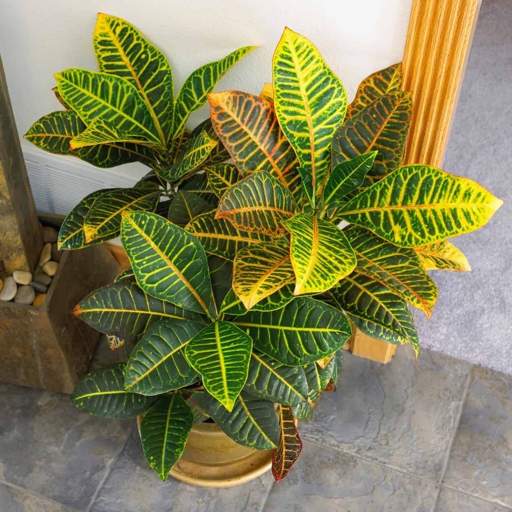
By taking these steps, you can help your croton plant to thrive and prevent further leaf loss.
Dealing with Heat and Low Humidity
If your croton is losing leaves, it is likely due to a combination of factors including low humidity, high temperatures, and lack of water. Croton plants are native to tropical regions and require warm, humid conditions to thrive.

There are a few things you can do to help your croton cope with the heat and low humidity:
– mist the leaves regularly with a spray bottle
– place the plant on a pebble tray or in a humidifier
– water the plant more frequently, making sure to keep the soil moist but not soggy
By taking these steps, you can help your croton plant survive and even thrive in hot, dry conditions.
[5] Acclimation Shock
In the meantime, try to keep the plant in a warm, humid environment and out of direct sunlight. When a plant is first brought home, it is often placed in a spot that is significantly different from where it was growing before. The good news is that acclimation shock is usually temporary, and your croton should start to adjust to its new home within a few weeks. Your croton may be losing leaves for a number of reasons, including acclimation shock. This change in environment can be stressful for the plant, and it may lose leaves as a result.
How to Fix It
If your Croton is losing leaves, it could be due to one of these eight reasons. But don’t worry, there are solutions for each issue.
Your Croton is getting too much sun. 1.
To fix this, move your Croton to a spot that gets less sun. If your Croton is getting too much sun, it will start to lose leaves.
Your Croton is getting too much water. 2.
If your Croton is getting too much water, it will start to lose leaves. To fix this, water your Croton less often.
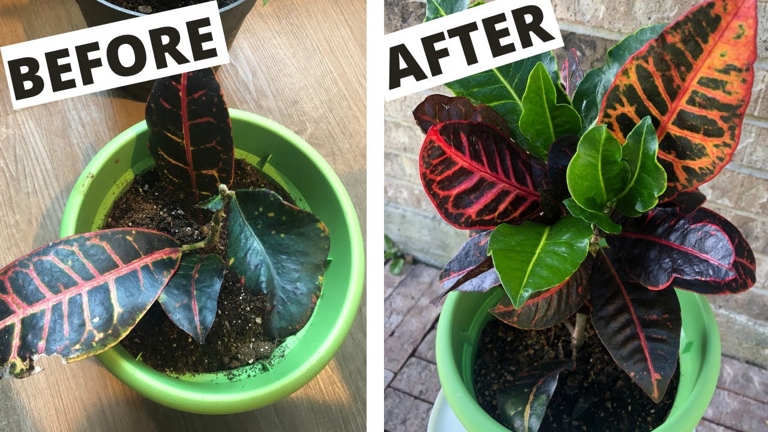
Your Croton is getting too little water. 3.
If your Croton is getting too little water, it will start to lose leaves. To fix this, water your Croton more often.
Your Croton is getting too much fertilizer. 4.
To fix this, fertilize your Croton less often. If your Croton is getting too much fertilizer, it will start to lose leaves.
5. Your Croton is getting too little fertilizer.
To fix this, fertilize your Croton more often. If your Croton is getting too little fertilizer, it will start to lose leaves.
There are pests on your Croton. 6.
If there are pests on your Croton, it will start to lose leaves. To fix this, remove the pests from your Croton.
7. There is a disease on your Croton.
To fix this, treat the disease on your Croton. If there is a disease on your Croton, it will start to lose leaves.
Your Croton is stressed. 8.
If your Croton is stressed, it will start to lose leaves. To fix this, try to reduce the stress in your Croton’s life.
[6] Pests and Diseases
Bacterial leaf spot is a common disease that affects crotons. Diseases such as bacterial leaf spot, powdery mildew, and root rot can also cause crotons to lose leaves. Aphids, mealybugs, scale insects, and spider mites are all common pests that can infest crotons. The leaves of the plant will develop small, dark spots that eventually turn yellow and drop off. Pests and diseases are among the most common reasons why crotons lose leaves. The roots of the plant will rot and the plant will eventually die. Powdery mildew is another common disease that can cause the leaves of the plant to turn yellow and drop off. These pests feed on the sap of the plant, which can cause the leaves to turn yellow and eventually drop off. Root rot is a serious disease that can kill crotons.
Dealing with Croton Pests and Diseases
If your Croton is losing leaves, it could be due to one of several reasons. Here are eight possible causes, along with solutions:

If your Croton is getting too much sun, it will lose leaves. Too much sun. Move it to a shadier spot. 1.
If you’re watering your Croton too much, it will start to drop leaves. Too much water. Let the soil dry out between watering. 2.
Not enough water. 3. Water it more frequently. If your Croton isn’t getting enough water, it will also drop leaves.
Repot it in a pot with drainage holes. If the soil doesn’t drain well, your Croton’s roots can’t get the oxygen they need. 4. Poor drainage.
Flush the soil with water to dilute the fertilizer. Fertilizer burn. If you’ve applied too much fertilizer, your Croton will lose leaves. 5.
Aphids, mealybugs, and scale can all feed on Croton leaves. 6. Pests. Treat the plant with an insecticide.
Diseases. Croton can be susceptible to fungal diseases like powdery mildew and root rot. 7. Treat with a fungicide.
If the temperature drops too low, your Croton will drop leaves. Temperature stress. Move it to a warmer spot. 8.
[7] Not Enough Nutrients Available to Your Croton Plant
If your Croton plant is losing leaves, it could be due to a lack of nutrients. While there are many possible reasons for leaf loss, nutrient deficiency is a common problem.
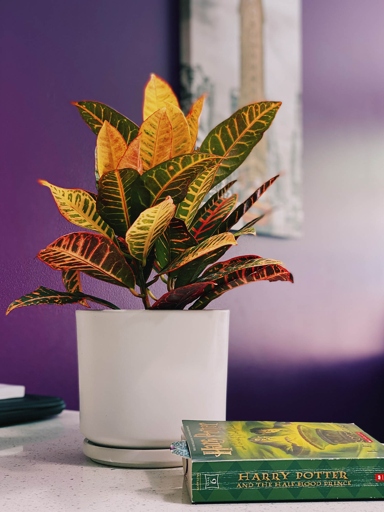
First, make sure you are using a high-quality potting mix that contains all the necessary nutrients. There are a few things you can do to help your Croton get the nutrients it needs. You can also add a slow-release fertilizer to the mix.
If your Croton is still losing leaves, you may need to provide additional nutrients. This can be done by adding a liquid fertilizer to the water when you water your plant. Be sure to follow the instructions on the fertilizer label.
By taking these steps, you can help ensure that your Croton plant gets all the nutrients it needs to stay healthy and thrive.
How to Fix It
If it is not, move it to a brighter spot. If they are, you will need to replant the Croton in fresh soil. Third, make sure the Croton is getting enough light. Second, check for pests and treat the plant accordingly. Finally, check the soil moisture and water the Croton as needed. If you follow these steps and your Croton still does not improve, you may need to consult a professional. First, check the roots to make sure they are not rotting. If your Croton is losing leaves, there are a few things you can do to try and fix the issue.
[8] Cold Drafts and Temperature Drop
If you think a temperature change is to blame, try moving your Croton to a warmer spot. A sudden temperature drop can cause leaves to fall off, as can drafts from doors or windows. If you notice your Croton losing leaves, it could be due to a number of reasons. If drafts are the problem, try to block them with a curtain or other barrier.
Solution for Cold Drafts and Temperature Drops
This is perfectly normal and nothing to worry about! There are a few things you can do to help your Croton adjust to the change in temperature and prevent further leaf loss. When the temperature outside starts to drop, you may notice that your Croton starts to lose leaves.
First, make sure you’re not over-watering your Croton. When the weather gets colder, the soil takes longer to dry out. Water your Croton only when the top inch of soil is dry to the touch.
Direct sunlight can be too harsh for Crotons in the colder months. Second, move your Croton to a location that gets indirect sunlight.

Just be sure to do this in the morning so the leaves have time to dry before nightfall. Finally, if your Croton is still losing leaves, you can try misting it with water to increase humidity.
By following these simple tips, you can help your Croton adjust to the colder weather and prevent further leaf loss.
Is It Normal For Crotons To Lose Their Leaves?
If the temperature drops below 60 degrees Fahrenheit, the leaves will start to turn brown and fall off. First, move your plant to a brighter spot. Lastly, crotons are sensitive to temperature changes. Crotons are susceptible to root rot, so it’s important to let the soil dry out between waterings. Another common reason for leaf loss is too much water. It’s normal for crotons to lose their leaves for a number of reasons. Overwatering can also cause leaves to turn yellow and drop off. If you think your croton is losing leaves for one of these reasons, there are a few solutions. The most common reason is that the plant is not getting enough light. Crotons need bright, indirect sunlight to thrive. And lastly, if the temperature drops, move your croton to a warmer spot. If you think you’re overwatering, allow the soil to dry out completely before watering again. If your croton is not getting enough light, it will start to lose its leaves.
How Long Does It Take Croton To Grow New Leaves?
If your croton is losing leaves, there are a few possible reasons: Croton leaves can take anywhere from a few weeks to a few months to grow back, depending on the plant’s age, size, and health.
Crotons need to be kept moist, but not soggy. Water the plant when the top inch of soil is dry. 1. The plant is too dry.
The plant is too cold. Crotons prefer warm, humid conditions. If the temperature drops below 60 degrees Fahrenheit, the leaves will start to drop. 2.
Crotons are sensitive to changes in their environment, so moving them to a new location or pot can cause leaf drop. Also, if the plant is not getting enough light, it will start to lose leaves. 3. The plant is too stressed.
The plant is infested with pests. Check your plant carefully for pests and treat with an appropriate insecticide if necessary. 4. Aphids, mealybugs, and scale can all feed on croton leaves, causing them to turn yellow and drop off.
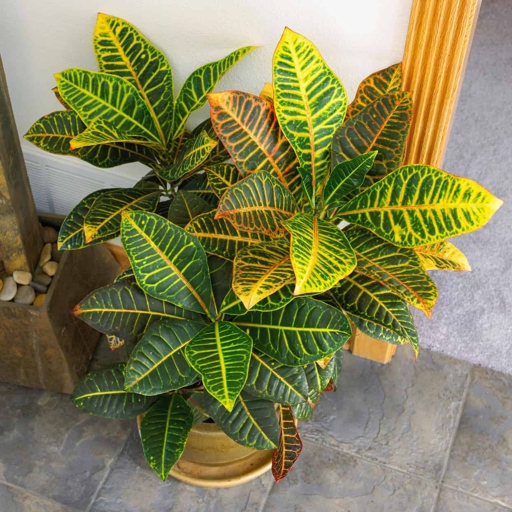
If you suspect your plant is sick, take it to a nursery or garden center for diagnosis and treatment. The plant has a disease. 5. Crotons are susceptible to a few different diseases, including root rot and leaf spot.
With proper care, your croton should start growing new leaves in no time.
6 Ways to Make Croton Grow More Leaves
While croton is a relatively easy plant to care for, there are a few things you can do to help it thrive. Croton, or Codiaeum variegatum, is a beautiful houseplant that is known for its vibrant leaves. Here are six ways to make your croton grow more leaves:
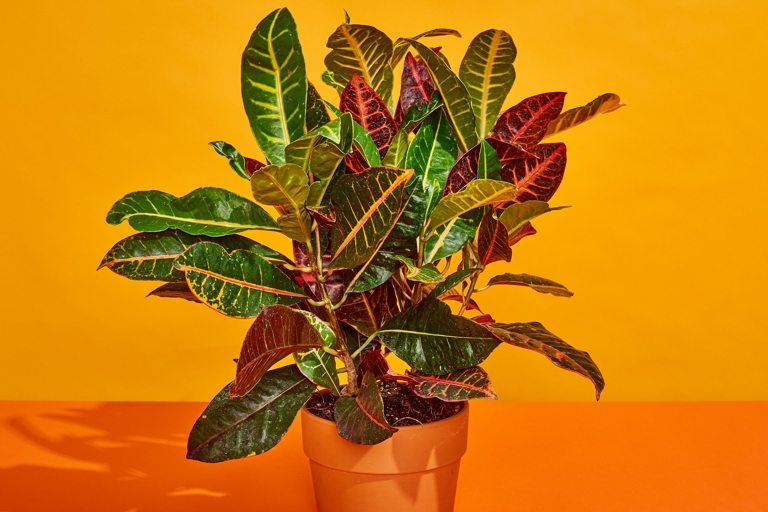
Croton thrives in bright, indirect sunlight. Place your croton in a bright location. 1. If your plant is not getting enough light, it will likely lose leaves.
Allow the top few inches of soil to dry out between watering. Water your croton regularly. Croton likes to be kept moist, but not soggy. 2.
Fertilize your croton monthly. 3. Use a balanced fertilizer that is formulated for houseplants.
Prune your croton as needed. 4. Pruning will encourage new growth.
Croton does not like drafts or sudden temperature changes. Avoid temperature extremes. Keep your plant away from windows and doors, and make sure your home is heated and cooled evenly. 5.
Inspect your croton regularly. 6. Look for pests or diseases and treat accordingly.
By following these simple tips, you can help your croton thrive and enjoy its beautiful foliage for years to come.
Give Your Croton Lots of Light
If it continues to lose leaves, you may need to provide additional light with grow lights. Croton plants are native to tropical regions and require bright, indirect sunlight to thrive. Move your plant to a brighter spot and monitor its progress. If your croton is losing leaves, it’s likely due to insufficient light.
If it continues to lose leaves, you may need to provide additional light with grow lights. Croton plants are known for their vibrant, colorful leaves. Move your plant to a brighter spot and monitor its progress. If your croton is losing leaves, it’s likely due to insufficient light. Crotons require bright, indirect sunlight to thrive.
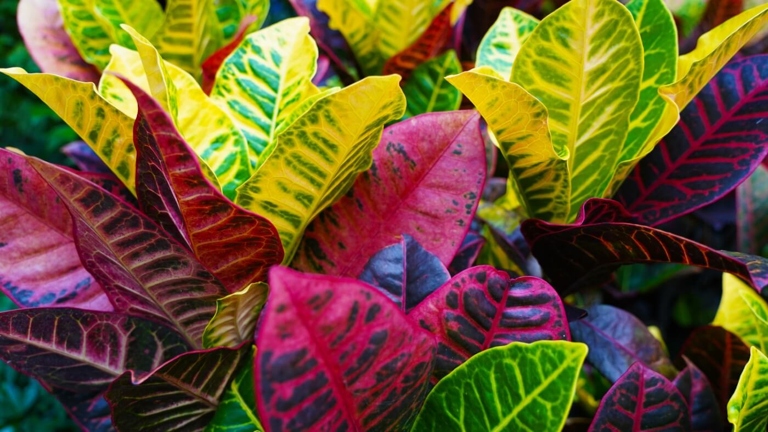
If leaf loss persists, you may need to provide additional light with grow lights. Providing your croton with bright, indirect sunlight is the best way to ensure its health and prevent leaf loss. If you suspect your croton is not getting enough light, move it to a brighter spot and monitor its progress.
Water Your Croton When the First Inch of the Soil Feels Dry
If you’re noticing that your Croton is losing leaves, it could be due to a number of reasons. When the first inch of the soil feels dry, it’s time to water your Croton. One of the most common reasons is that the plant isn’t getting enough water.
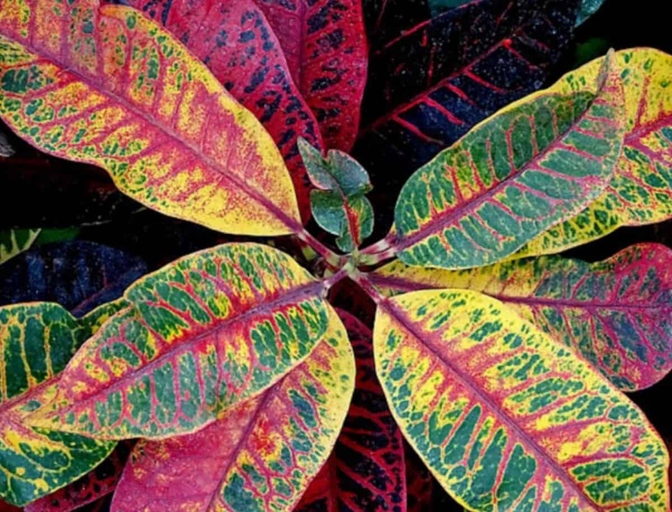
It could be that the plant is getting too much sun or too much wind. Both of these can cause the leaves to dry out and eventually fall off. If you think your Croton is getting enough water but it’s still losing leaves, there are a few other things to check.
They can help you figure out what’s going on and how to fix it. If you’re not sure what’s causing the problem, it’s always a good idea to consult with a professional.
Start Using A Fertilizer
There are a few reasons why your Croton may be losing leaves, and a fertilizer can help to correct the problem. If your Croton is losing leaves, it may be time to start using a fertilizer.
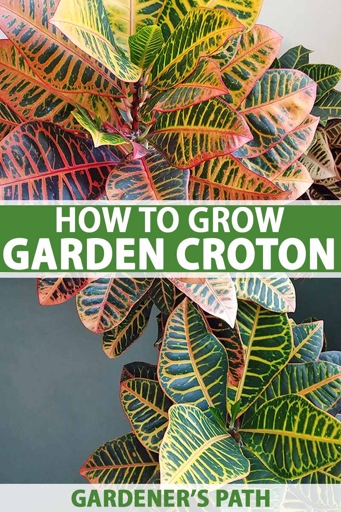
A fertilizer can help to correct this problem by providing your Croton with the nutrients it needs. One reason your Croton may be losing leaves is because it is not getting enough nutrients.
A fertilizer can help to correct this problem by providing your Croton with the water it needs. Another reason your Croton may be losing leaves is because it is not getting enough water.
A third reason your Croton may be losing leaves is because it is not getting enough sunlight. A fertilizer can help to correct this problem by providing your Croton with the sunlight it needs.
A fertilizer can help to correct the problem and keep your Croton healthy. If your Croton is losing leaves, it is important to correct the problem as soon as possible.
Remove Dead Leaves, Stems, and Branches
One reason could be that it is not getting enough light. If you see any pests or diseases on your Croton, you should treat them immediately. Crotons need to be watered regularly, and if they are not, they will start to lose their leaves. Finally, another reason could be that there are pests or diseases attacking your Croton. Another reason could be that it is not getting enough water. Your Croton is losing leaves for a variety of reasons. Crotons need a lot of light, so if yours is not getting enough, it will start to lose its leaves.
Use Nutrient-Rich and Well-Draining Soil
When it comes to keeping your croton healthy, the type of soil you use is just as important as the amount of sunlight and water it receives. Crotons are native to tropical regions and prefer nutrient-rich, well-draining soil. If your croton is planted in soil that is too dense or doesn’t drain well, the roots will rot and the plant will eventually die.
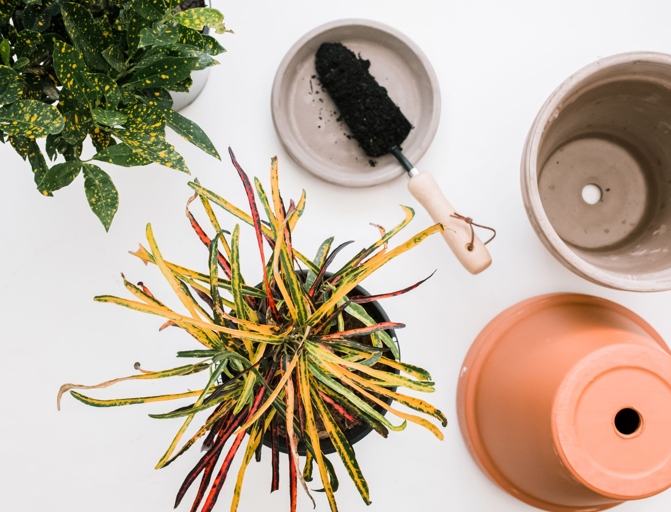
If you live in an area with high humidity, you may also want to add a layer of gravel to the bottom of the pot to help with drainage. To ensure your croton has the best chance of thriving, use a high-quality potting mix that contains peat moss, perlite, and vermiculite.
If the leaves of your croton start to turn yellow or brown, this is a sign that it’s not getting enough water. When it comes to watering, be sure to give your croton enough water to keep the soil moist, but not soggy. Allow the top inch or so of soil to dry out between waterings.
Add Organic Matter to the Soil
Organic matter is essential for healthy plant growth, yet many gardeners overlook this important element. Adding organic matter to the soil helps improve drainage and aeration while also providing nutrients for plants. Here are eight reasons why your croton may be losing leaves, and how adding organic matter to the soil can help.
1. The soil is too compacted.
Adding organic matter to the soil can help improve drainage and aeration, making it easier for roots to grow.
The soil is too dry. 2.
Organic matter helps the soil retain water, making it available to plants when they need it.
3. The soil is too acidic.
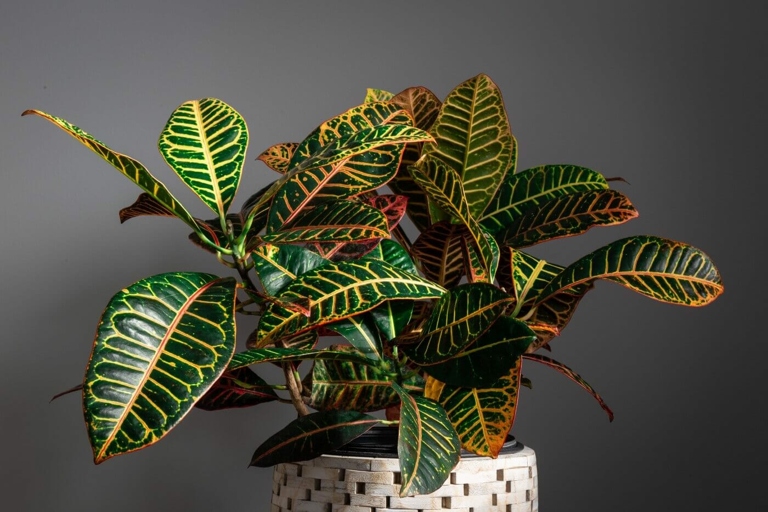
Organic matter can help neutralize the soil, making it more hospitable for plants.
4. The soil is lacking in nutrients.
Organic matter is a natural source of nutrients that can help plants thrive.
The plants are stressed. 5.
Organic matter can help reduce stress on plants by providing a buffer against extreme temperatures and drought.
The plants are not getting enough light. 6.
Organic matter can help reflect light, making it available to plants that would otherwise be in the shade.
The plants are not getting enough water. 7.
Organic matter can help the soil retain water, making it available to plants when they need it.
The plants are not getting enough air. 8.
Organic matter can help improve drainage and aeration, making it easier for roots to grow.
Frequently Asked Questions
1. Why is my Croton losing leaves?
There are a few reasons why your Croton may be losing leaves. It could be due to too much or too little water, too much or too little sunlight, or a nutrient deficiency.
2. How can I tell if my Croton is getting too much or too little water?
If your Croton is getting too much water, the leaves will start to yellow and drop off. If it’s getting too little water, the leaves will turn brown and dry up.
3. How can I tell if my Croton is getting too much or too little sunlight?
If your Croton is getting too much sunlight, the leaves will start to turn red or brown. If it’s getting too little sunlight, the leaves will be pale green or yellow.
4. What are some signs of a nutrient deficiency in my Croton?
If your Croton is lacking nutrients, the leaves will be small and stunted. You may also see yellow or brown spots on the leaves.
5. How can I fix a water or nutrient deficiency?
If your Croton is getting too much or too little water, you can adjust your watering schedule. If it’s getting too much sunlight, you can move it to a shadier spot. If it has a nutrient deficiency, you can fertilize it with a balanced fertilizer.
6. Why are the leaves on my Croton turning yellow?
Yellowing leaves can be a sign of a nutrient deficiency, too much water, or too much sunlight.
7. Why are the leaves on my Croton turning brown?
Browning leaves can be a sign of too little water, too much sunlight, or a nutrient deficiency.
8. Why are the leaves on my Croton turning red?
Red leaves can be a sign of too much sunlight.
Final thoughts
If your Croton is losing leaves, it could be due to a number of reasons. However, there are some solutions that can help. By following the tips in this article, you can help your Croton to stay healthy and happy.
